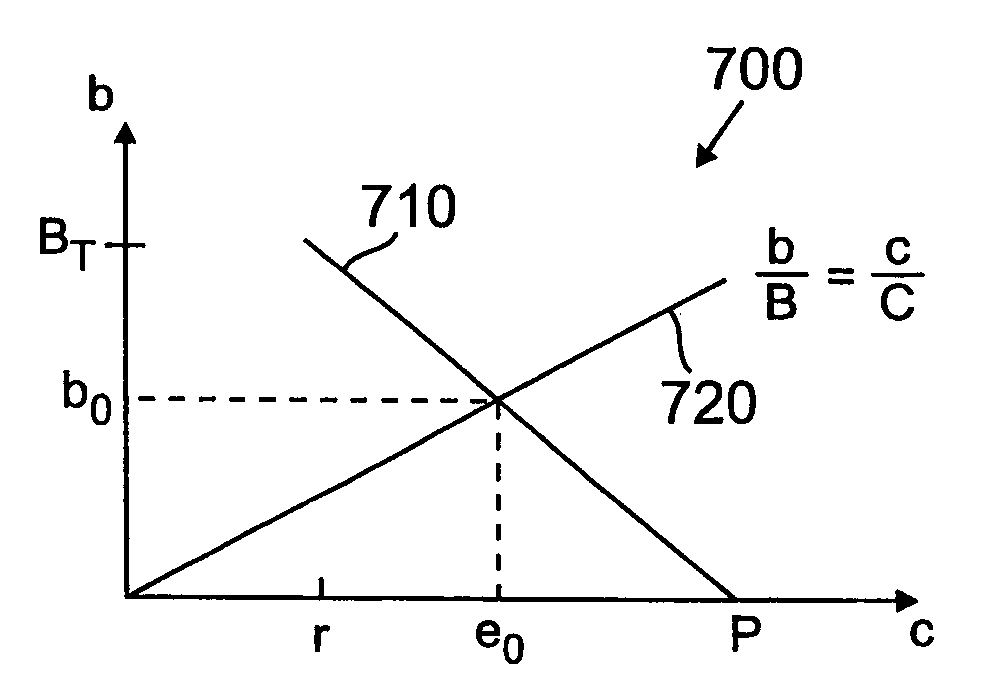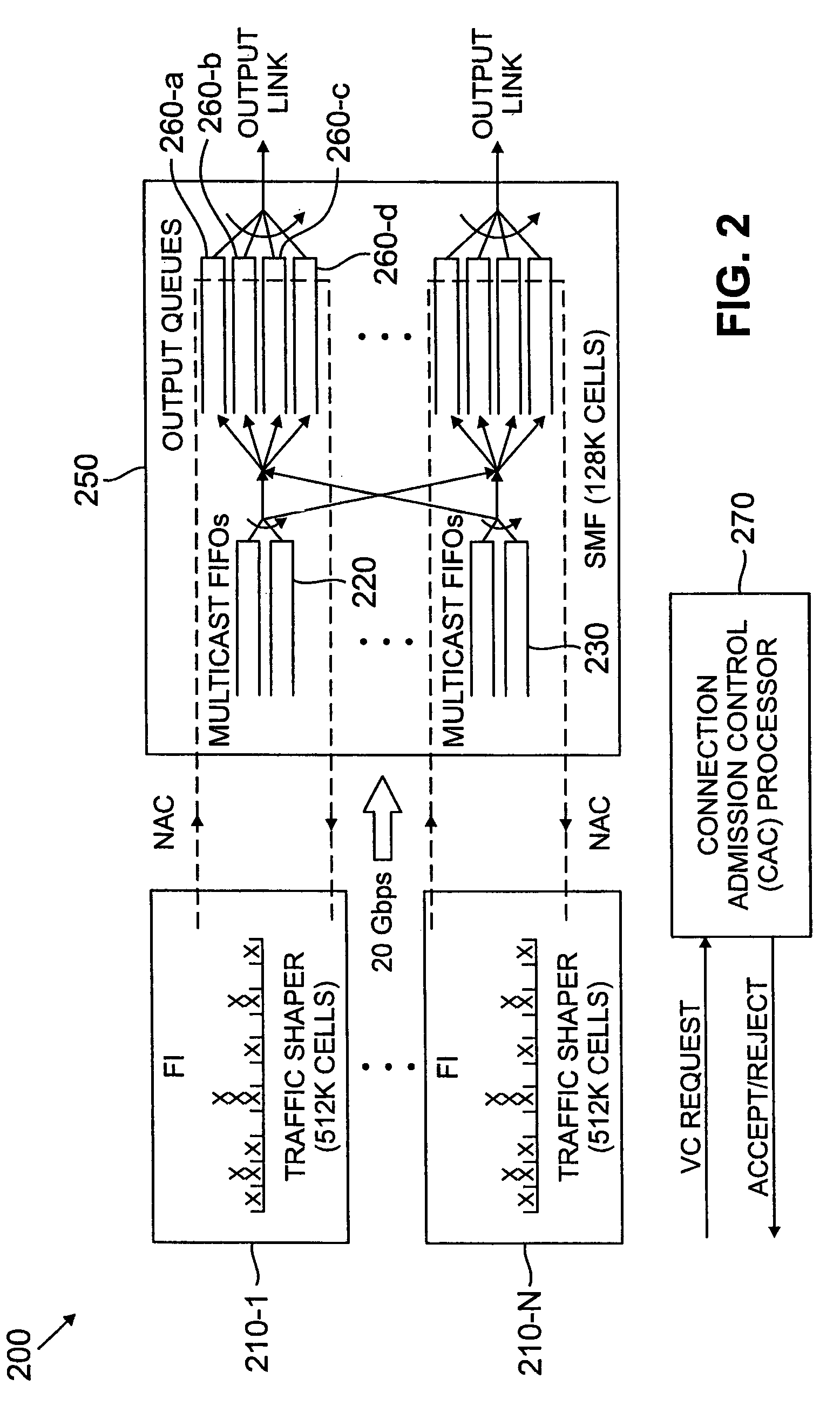Connection admission control and routing by allocating resources in network nodes
- Summary
- Abstract
- Description
- Claims
- Application Information
AI Technical Summary
Benefits of technology
Problems solved by technology
Method used
Image
Examples
Embodiment Construction
[0024]FIG. 1 illustrates a network in which the inventive method for admission control and routing of requests for virtual circuits based on network resources required by the request may be practiced. Network 110 comprises switching nodes 130-i and links 140-k. Each communication device 105-j has associated with it devices, such as access regulators 120-j, which regulate the flow or rate of information from communication device 105-j into network 110 according to a function characterized by a set of (access regulator) parameters.
[0025]For illustrative purposes, access regulator 120-j will be considered to be a leaky bucket regulator. However, other types of regulators, such as buffered leaky bucket regulators or cascaded leaky bucket regulators, may be used. Each communication device 105-j generates information, such as data, text, voice or video, for use by, or receives information from, other communication devices in the network. Information from communication device 105-j is char...
PUM
 Login to View More
Login to View More Abstract
Description
Claims
Application Information
 Login to View More
Login to View More - R&D
- Intellectual Property
- Life Sciences
- Materials
- Tech Scout
- Unparalleled Data Quality
- Higher Quality Content
- 60% Fewer Hallucinations
Browse by: Latest US Patents, China's latest patents, Technical Efficacy Thesaurus, Application Domain, Technology Topic, Popular Technical Reports.
© 2025 PatSnap. All rights reserved.Legal|Privacy policy|Modern Slavery Act Transparency Statement|Sitemap|About US| Contact US: help@patsnap.com



